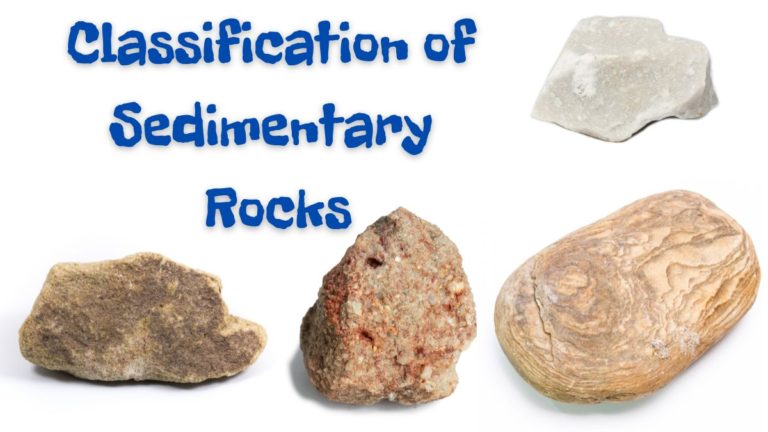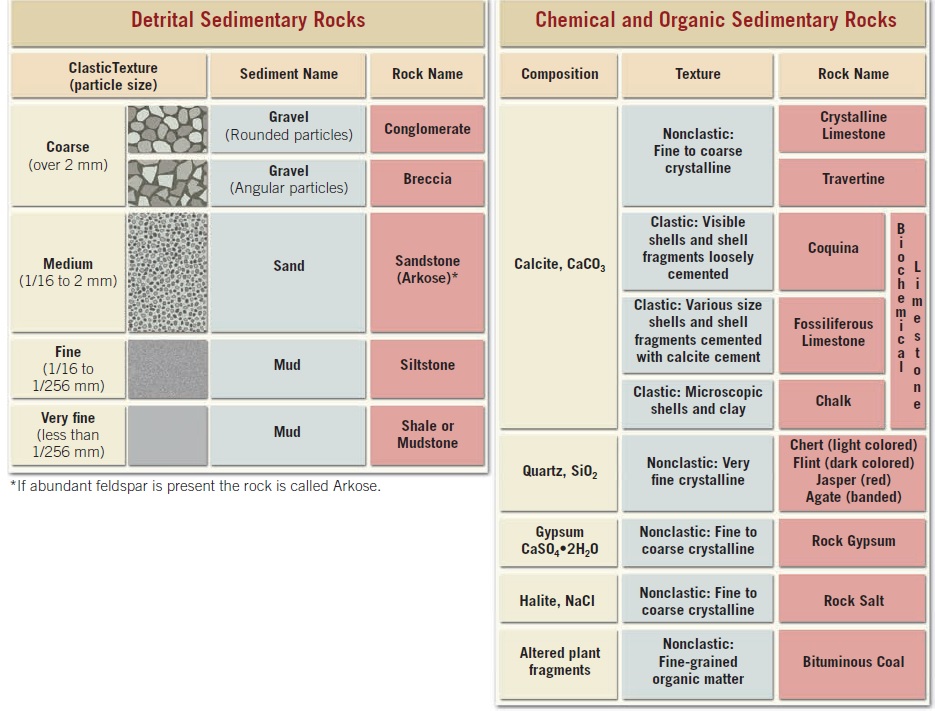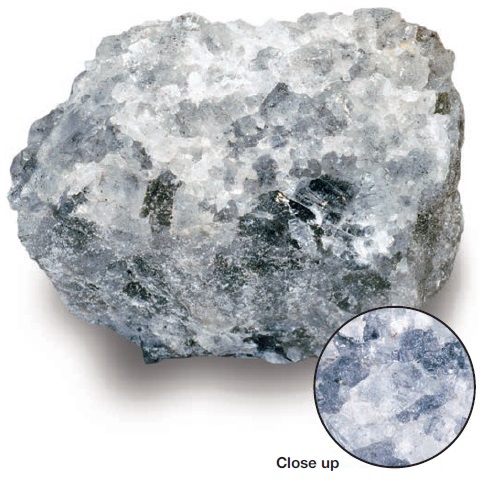Classification of Sedimentary Rocks

The classification scheme in Figure divides sedimentary rocks into major groups: detrital on the left side and chemical/organic on the right. Further, we can see that the main criterion for subdividing the detrital rocks is particle size, whereas the primary basis for distinguishing among different rocks in the chemical group is their mineral composition.

The main criterion for naming detrital rocks is particle size. The primary basis for naming chemical and organic sedimentary rocks is their composition.
As is the case with many (perhaps most) classifications of natural phenomena, the categories presented in Figure are more rigid than the actual state of nature.
In reality, many of the sedimentary rocks classified into the chemical group also contain at least small quantities of detrital sediment. Many limestones, for example, contain varying amounts of mud or sand, giving them a “sandy” or “shaly” quality. Conversely, because practically all detrital rocks are cemented with material that was originally dissolved in water, they too are far from being “pure.”
Texture is a part of sedimentary rock classification. There are two major textures used in the classification of sedimentary rocks: clastic and nonclastic.
The term clastic is taken from a Greek word meaning “broken.” Rocks that display a clastic texture consist of discrete fragments and particles that are cemented and compacted together. Although cement is present in the spaces between particles, these openings are rarely filled completely. All detrital rocks have a clastic texture. In addition, some chemical sedimentary rocks exhibit this texture. For example, coquina, the limestone composed of shells and shell fragments, is obviously as clastic as a conglomerate or sandstone. The same applies for some varieties of oolitic limestone.
Some chemical sedimentary rocks have a nonclastic, or crystalline texture, in which the minerals form a pattern of interlocking crystals. The crystals may be microscopically small or large enough to be visible without magnification. Common examples of rocks with nonclastic textures are those deposited when saline water evaporates.

The materials that make up many other nonclastic rocks may actually have originated as detrital deposits. In these instances, the particles probably consisted of shell fragments and other hard parts rich in calcium carbonate or silica. The clastic nature of the grains was subsequently obliterated or obscured because the particles recrystallized when they were consolidated into limestone or chert.
Nonclastic rocks consist of intergrown crystals, and some may resemble igneous rocks, which are also crystalline. The two rock types are usually easy to distinguish because the minerals contained in nonclastic sedimentary rocks are quite unlike those found in most igneous rocks. For example, rock salt, rock gypsum, and some forms of limestone consist of intergrown crystals, but the minerals within these rocks (halite, gypsum, and calcite) are seldom associated with igneous rocks.
